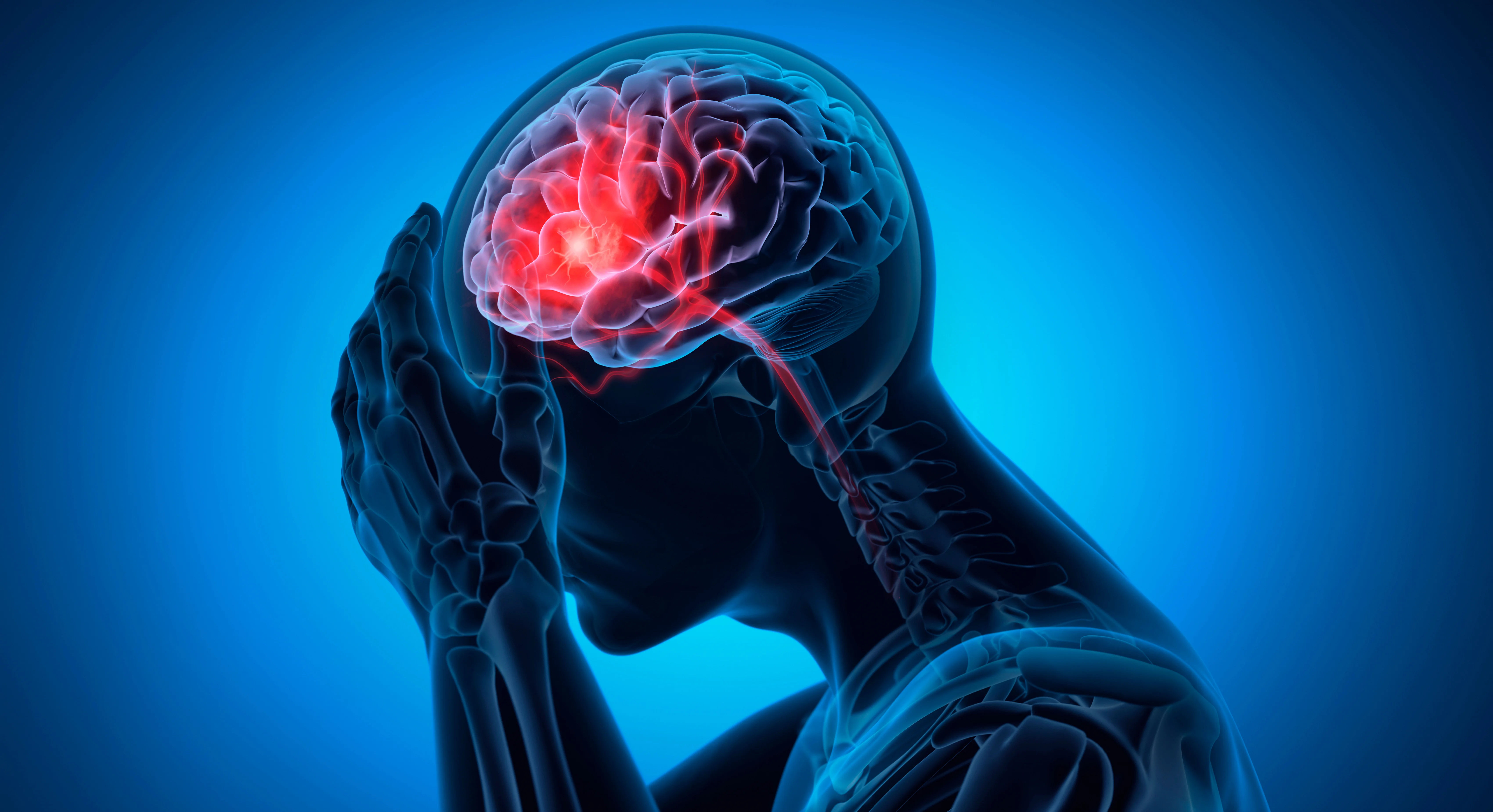Smoking and Stroke Risk: Understanding the Link
Stroke is a leading cause of death and disability worldwide. It occurs when the blood supply to part of the brain is interrupted, causing brain cells to die. While there are several risk factors for stroke—some of which we can control and others we can’t—smoking is one of the most significant preventable risks.

Written by Dr.Sonia Bhatt
Last updated on 3rd Jul, 2025

The Link Between Smoking and Stroke
Smoking is a major contributor to cardiovascular diseases, including stroke. It is well-established that smoking increases the risk of both ischaemic and haemorrhagic strokes. Ischaemic strokes, which are the most common type, occur when a blood clot blocks a blood vessel supplying the brain, while haemorrhagic strokes occur when a blood vessel in the brain bursts.
The mechanisms behind smoking’s harmful effects on the brain are complex, but it essentially involves damaging the blood vessels, increasing clot formation, and promoting inflammation.
Why Smoking Is Particularly Dangerous for Stroke
While smoking is harmful to overall health in numerous ways, its effects on stroke risk are especially concerning. Smoking accelerates the processes that lead to both ischaemic and haemorrhagic strokes. It does so by impairing the cardiovascular system, damaging blood vessels, and affecting the brain's blood flow in a multitude of ways. Let's explore why smoking poses such a significant threat to stroke risk:
1. Smoking Accelerates Atherosclerosis
Atherosclerosis is the process by which fatty deposits (plaque) build up inside the arteries, narrowing them and restricting blood flow. This is one of the primary contributors to ischaemic stroke. When a plaque ruptures, it can trigger the formation of a blood clot that blocks blood flow to the brain, causing a stroke.
Cigarette smoking accelerates the development of atherosclerosis in multiple ways:
Damage to Artery Walls: The toxic chemicals in tobacco smoke, such as nicotine and carbon monoxide, damage the endothelial lining of blood vessels, making them more vulnerable to plaque accumulation. Over time, this damage increases the risk of plaque rupture, leading to blood clots that can cause a stroke.
Increased Cholesterol Levels: Smoking has been shown to increase levels of "bad" low-density lipoprotein (LDL) cholesterol and reduce levels of "good" high-density lipoprotein (HDL) cholesterol. High levels of LDL contribute to plaque build-up in the arteries, further increasing stroke risk.
2. Smoking Raises Blood Pressure
High blood pressure (hypertension) is one of the most significant risk factors for stroke, and smoking directly contributes to elevated blood pressure. Nicotine stimulates the release of adrenaline, which causes the heart rate to increase and blood vessels to constrict. This, in turn, raises blood pressure, forcing the heart to work harder.
Chronic Hypertension: Over time, repeated spikes in blood pressure from smoking contribute to the development of chronic hypertension, which weakens blood vessels and makes them more prone to rupture or blockage. High blood pressure is particularly dangerous for haemorrhagic stroke, where the rupture of a blood vessel in the brain leads to bleeding.
Vascular Damage: Chronic high blood pressure from smoking can cause the blood vessels to lose their elasticity and become rigid. This reduces the ability of arteries to expand and contract with each heartbeat, increasing the risk of a stroke.
3. Nicotine and Blood Clotting
Smoking is directly linked to an increased tendency for blood to clot. Nicotine and other chemicals in cigarette smoke affect the blood’s clotting mechanisms in a few key ways:
Increased Platelet Aggregation: Platelets are tiny blood cells that help form clots to stop bleeding. Smoking increases the stickiness of platelets, making them more likely to clump together and form a clot. This can block blood vessels in the brain and cause an ischaemic stroke.
Elevated Fibrinogen Levels: Smoking also increases levels of fibrinogen, a protein involved in the blood clotting process. Higher fibrinogen levels contribute to the formation of blood clots, increasing the likelihood of strokes and other cardiovascular events.
4. Reduced Oxygen Supply to the Brain
Each time a person inhales tobacco smoke, carbon monoxide is introduced into their bloodstream. Carbon monoxide binds to haemoglobin in the blood, reducing the amount of oxygen that can be carried to vital organs, including the brain.
Hypoxia (Low Oxygen Levels): The reduced oxygen levels in the blood (hypoxia) can strain the cardiovascular system, making the heart and blood vessels work harder. Over time, this can contribute to the development of conditions that increase stroke risk, including high blood pressure, atherosclerosis, and heart disease.
Impact on the Brain: The brain is highly sensitive to changes in oxygen supply, and any significant reduction can cause damage to brain tissue. In the event of a stroke, the already compromised oxygen supply to the brain can worsen the damage, leading to more severe consequences for the affected individual.
5. Increased Inflammation in Blood Vessels
Smoking leads to systemic inflammation, which affects nearly every part of the body, including the blood vessels. This chronic inflammatory response can damage the inner lining of blood vessels and contribute to the process of atherosclerosis.
Endothelial Dysfunction: The endothelial cells that line blood vessels play a crucial role in maintaining blood flow and preventing clot formation. Smoking impairs endothelial function, making blood vessels more prone to damage and more likely to develop plaque buildup. This further increases the risk of a clot forming and blocking the blood supply to the brain.
Increased C-Reactive Protein (CRP) Levels: CRP is a marker of inflammation that is elevated in smokers. High CRP levels are linked to a higher risk of stroke, as inflammation damages blood vessels, making them more susceptible to clot formation and rupture.
6. Smoking and the Brain’s Vulnerability
The brain is particularly vulnerable to stroke because it requires a constant supply of oxygen and nutrients to function. Any disruption in this supply can cause severe, sometimes irreversible damage. Smoking exacerbates this vulnerability by increasing the chances of an ischaemic stroke (caused by a blood clot) or a haemorrhagic stroke (caused by a ruptured blood vessel). In fact, research suggests that smokers have a higher likelihood of suffering from more severe strokes due to the cumulative damage that smoking causes to the cardiovascular system and the brain.
Quitting Smoking: The Best Step You Can Take to Reduce Stroke Risk
If you're ready to quit smoking, there are several resources and strategies that can help you succeed:
Seek Support: Reach out to your healthcare provider for advice on smoking cessation. Many offer support, counselling, and medications to help manage withdrawal symptoms.
Nicotine Replacement Therapy (NRT): Options such as nicotine gum, patches, lozenges, and inhalers can help reduce cravings and withdrawal symptoms. These methods deliver nicotine without the harmful chemicals found in tobacco smoke.
Prescription Medications: There are prescription medications available, like varenicline (Champix) and bupropion (Zyban), which can help reduce cravings and withdrawal symptoms.
Behavioural Therapy: Working with a therapist or joining a support group can help you manage triggers and develop strategies to cope with cravings.
Mindfulness and Stress Management: Many people smoke to cope with stress. Learning stress management techniques like deep breathing, yoga, or meditation can help you stay calm and focused on your goal to quit.
Stay Active: Physical activity is a great way to manage stress, boost mood, and reduce cravings. Regular exercise can help keep your mind and body healthy while you quit smoking.
Celebrate Milestones: Quitting smoking is a major achievement, and recognising small milestones (like one week, one month, or six months smoke-free) can keep you motivated.
Conclusion
Smoking is a leading preventable cause of stroke, contributing to both ischaemic and haemorrhagic strokes. The damage caused by smoking—through increasing blood pressure, reducing oxygen supply, promoting clotting, damaging blood vessels, and increasing inflammation—greatly elevates the risk of having a stroke. The good news is that quitting smoking can dramatically reduce your stroke risk, and the benefits of quitting are felt quickly, even if you’ve been a smoker for years. With the right support and strategies, you can improve your health and dramatically lower your risk of stroke.
Consult Top Neurologists
Consult Top Neurologists

Dr. Aditendraditya Singh Bhati
Neurosurgeon
18 Years • MBBS(2004), DNB Neurosurgery(2014); MNAMS; Fellow Neuroendoscopy
Delhi
Apollo Hospitals Indraprastha, Delhi
(100+ Patients)

Dr. Sarthak Mehta
Neurologist
6 Years • MBBS , MS Mch ( Neuro )
Bengaluru
Apollo Clinic, JP nagar, Bengaluru

Dr. Ganeshgouda Majigoudra
Neurologist
10 Years • MBBS, MD ( GENERAL MEDICINE) DM (NEUROLOGY)
Bengaluru
Apollo Clinic, JP nagar, Bengaluru
Dr. Annakula Ramu
Neurologist
7 Years • MBBS, MD General Medicine, DM Neurology
Jagtial
Sairam Neuro and Children Hospital, Jagtial

Dr Rajashekar Mummadi
Neurologist
3 Years • MBBS, DNB General Medicine, DRNB Neurology
Hyderabad
Dr Ram's Neuro Clinic, Hyderabad




